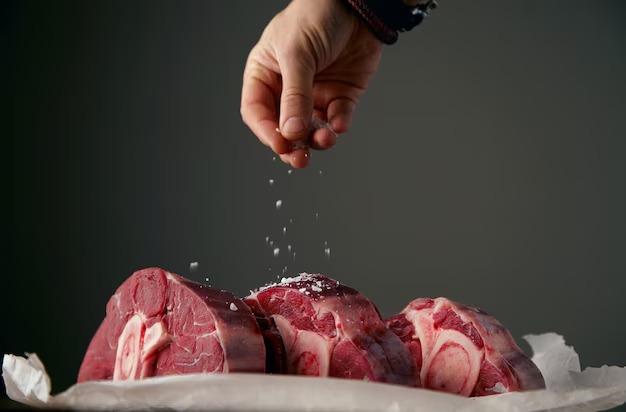How Long Can You Really Keep Meat in the Refrigerator?
Whether you're planning a big family feast or simply stocking up on your weekly essentials, ensuring your meat stays fresh is crucial for food safety and flavor preservation. While the refrigerator serves as an excellent tool to extend the life of your groceries, it's important to know exactly how long you can keep different types of meat before they become unsafe to consume. This comprehensive guide will walk you through the shelf life of various meats in the refrigerator and provide practical storage tips to ensure your meals are both tasty and safe.
🥩 The Basics of Meat Storage
Understanding Refrigeration's Role
Refrigeration helps slow the growth of bacteria, thus prolonging the freshness of your meat. While refrigeration does not kill bacteria, it significantly decelerates their growth, keeping meat safe for a longer period compared to leaving it at room temperature. However, not all meats are created equal; different types have varying shelf lives.
Key Factors Affecting Meat Shelf Life
Several factors influence how long meat stays fresh in the refrigerator:
- Type of Meat: Different proteins have unique compositions that affect longevity.
- Packaging: Vacuum-sealed and airtight packaging generally extends shelf life.
- Refrigerator Temperature: An ideal temperature for meat is typically around 34–40°F (1–4°C).
🐔 Poultry: Chicken and Turkey
Fresh Poultry Storage
Whole Chicken/Turkey: Generally, raw chicken and turkey can be stored in the refrigerator for 1 to 2 days. It's crucial to keep them in a tray to catch any drippings.
Chicken/Turkey Parts: Breasts, thighs, and drumsticks tend to have a similar shelf life of 1 to 2 days.
Cooked Poultry Storage
Cooked chicken and turkey can be kept in the refrigerator for about 3 to 4 days. Always ensure they are stored in sealed containers to prevent contamination.
💡 Pro Tip
- Always store poultry on the bottom shelf of your refrigerator to prevent juices from contaminating other foods.
🥩 Beef and Veal
Fresh Beef and Veal Storage
Steaks and Roasts: When properly stored, fresh cuts of beef and veal can last 3 to 5 days in the refrigerator.
Ground Beef/Veal: This type of meat has a shorter shelf life and should be cooked within 1 to 2 days when kept in the refrigerator.
Cooked Beef and Veal Storage
Cooked beef and veal, when stored correctly in airtight containers, typically remain good for 3 to 4 days.
📝 Note
- The aging process of beef can extend its refrigerator shelf life beyond initial purchase time if stored in an ideal cool, dry environment.
🐷 Pork: Versatile and Flavorful
Fresh Pork Storage
Chops and Roasts: These should be consumed within 3 to 5 days.
Ground Pork: This is more susceptible to bacterial growth and should be consumed within 1 to 2 days.
Cooked Pork Storage
Cooked pork dishes stay in good condition for 3 to 4 days.
🔑 Key Reminder
- Always trust your senses. If raw pork exhibits a sour odor, discard it immediately.
🐟 Seafood: Perishable But Delicious
Fresh Seafood Storage
Fish: Most fresh fish should be cooked within 1 to 2 days, depending on its freshness at purchase.
Shellfish: Like clams, mussels, and oysters, shellfish should be consumed within 1 to 2 days as well.
Cooked Seafood Storage
Cooked seafood usually stays safe for 3 to 4 days in the refrigerator.
🌊 Surf Tip
- Store seafood on ice or in a cooler with ice packs even while it's in the refrigerator for maximum freshness.
📝 Summary Table of Meat Refrigeration Times
| Type of Meat | Fresh | Cooked |
|---|---|---|
| Chicken/Turkey | 1-2 days | 3-4 days |
| Beef/Veal | 3-5 days | 3-4 days |
| Ground Meats | 1-2 days | 3-4 days |
| Pork | 3-5 days | 3-4 days |
| Fish | 1-2 days | 3-4 days |
| Shellfish | 1-2 days | 3-4 days |
📦 Additional Tips for Meat Storage
Vacuum Sealing
Using vacuum-sealed bags removes air, which helps prevent bacteria growth and extend shelf life. This method is especially beneficial for preserving flavor and texture.
Importance of Temperature Control
Investing in a refrigerator thermometer ensures your fridge maintains an optimal temperature. This small step can make a big difference in extending meat's shelf life.
Safe Handling Practices
Proper hygiene, such as washing hands and sanitizing surfaces, is essential when handling meat. Additionally, always store meat in designated containers or plastic wrap to minimize cross-contamination.
🔍 Recognizing Spoilage
Visual and olfactory cues play a significant role in identifying spoilage. It's paramount to trust your instincts:
- Smell: Off odors, like sour or ammonia scents, indicate spoilage.
- Color: Discoloration, such as brown spots on beef or a dull appearance in fresh poultry, can be a red flag.
- Texture: A slimy layer that doesn’t wash off with water is a sign to discard the meat.
Empowering Your Culinary Experience
Understanding how long meat can be safely stored in the refrigerator equips you with the knowledge to keep meals both delicious and secure. By integrating these practices and timeframes into your routine, you not only preserve the flavor but also protect against foodborne illnesses.
Next time you organize your groceries, keep your summary table handy for a quick reference guide on how long to store various types of meat. This ensures that every bite you share with your family is both delightful and safe. Bon appétit!
This approach to "How Long Meat in Refrigerator" demystifies storage times and provides actionable insights into safe meat handling, empowering you to make informed decisions in your kitchen.Aight
